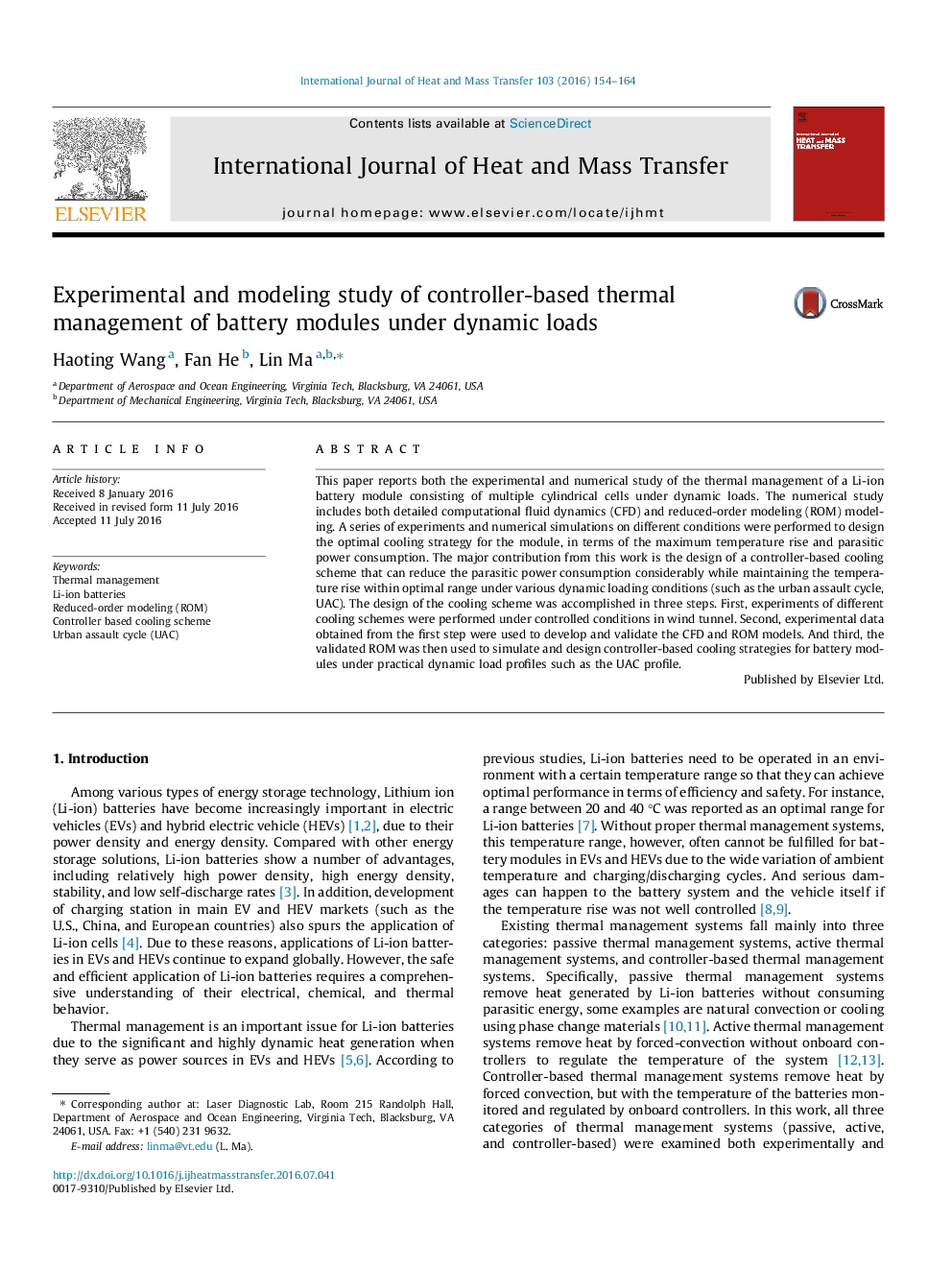| Article ID | Journal | Published Year | Pages | File Type |
|---|---|---|---|---|
| 7054968 | International Journal of Heat and Mass Transfer | 2016 | 11 Pages |
Abstract
This paper reports both the experimental and numerical study of the thermal management of a Li-ion battery module consisting of multiple cylindrical cells under dynamic loads. The numerical study includes both detailed computational fluid dynamics (CFD) and reduced-order modeling (ROM) modeling. A series of experiments and numerical simulations on different conditions were performed to design the optimal cooling strategy for the module, in terms of the maximum temperature rise and parasitic power consumption. The major contribution from this work is the design of a controller-based cooling scheme that can reduce the parasitic power consumption considerably while maintaining the temperature rise within optimal range under various dynamic loading conditions (such as the urban assault cycle, UAC). The design of the cooling scheme was accomplished in three steps. First, experiments of different cooling schemes were performed under controlled conditions in wind tunnel. Second, experimental data obtained from the first step were used to develop and validate the CFD and ROM models. And third, the validated ROM was then used to simulate and design controller-based cooling strategies for battery modules under practical dynamic load profiles such as the UAC profile.
Keywords
Related Topics
Physical Sciences and Engineering
Chemical Engineering
Fluid Flow and Transfer Processes
Authors
Haoting Wang, Fan He, Lin Ma,
